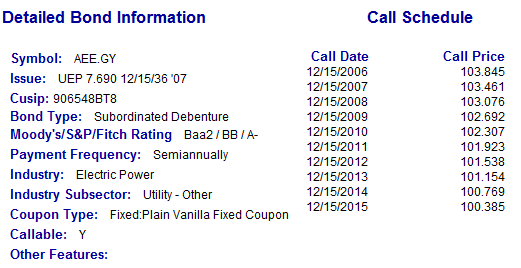What Are YieldtoMaturity and YieldtoCall Bonds All About For Dummies
Post on: 3 Июль, 2015 No Comment

When you invest in bonds, bond salespeople will talk about several types of bond yields, including yield-to-maturity and yield-to-call. Understanding what kind of yield is being promised on a bond or bond fund is important to your investment success.
Yield-to-maturity bonds
Although far from perfect, the yield-to-maturity is a relatively accurate measure of return. Yield-to-maturity factors in not only the coupon rate and the price you paid for the bond, but also how far you have to go to get your principal back, and how much that principal will be.
Yield-to-maturity calculations make a big assumption that may or may not prove true: They assume that as you collect your interest payments every six months, you reinvest them at the same interest rate youre getting on the bond.
To calculate the yield-to-maturity, you can use a financial calculator, such as MoneyChimp.com. You put in the par (face) value of the bond (almost always $1,000), the price you are considering paying for the bond, the number of years to maturity, and the coupon rate, and press “calculate.”
Yield-to-call bonds
If you buy a callable bond, the company or municipality that issues your bond can ask for it back, at a specific price, long before the bond matures. Premium bonds, because they carry higher-than-average coupon yields, are often called.
What that means is that your yield-to-maturity is pretty much a moot point. What youre likely to see in the way of yield is yield-to-call. Its figured out the same way that you figure out yield-to-maturity (use MoneyChimp.com if you dont have a financial calculator), but the end result your actual return may be considerably lower.
Keep in mind that bonds are generally called when market interest rates have fallen. In that case, not only is your yield on the bond youre holding diminished, but your opportunity to invest your money in anything paying as high an interest rate has passed. From a bondholders perspective, calls are not pretty, which is why callable bonds must pay higher rates of interest to find any buyers.
Usually a callable bond will not have one possible call date, but several. Worst-case basis yield (or yield-to-worst-call) looks at all possible yields and tells you what your yield would be if the company or municipality decides to call your bond at the worst possible time.
- Add a Comment Print Share














